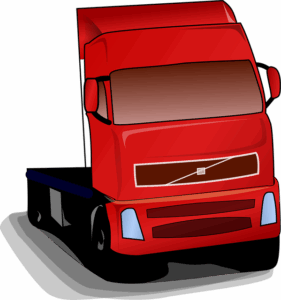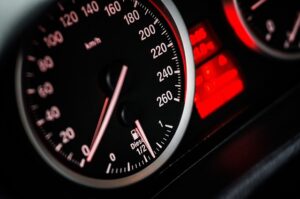Registering Your Car in California: A Step-by-Step Guide with DMV VIN Verifier Tips
Registering your car in California is a straightforward process, but it requires careful preparation. This guide walks you through every step, from understanding the registration process and gathering…….

Registering your car in California is a straightforward process, but it requires careful preparation. This guide walks you through every step, from understanding the registration process and gathering essential documents to visiting the DMV and utilizing a DMV VIN verifier. By following these steps, you’ll ensure a smooth experience and compliance with state regulations. After registration, learn about important post-registration follow-ups for a seamless transition as a California vehicle owner.
- Understanding the Registration Process
- Gathering Required Documents
- Visiting the DMV: Step-by-Step Guide
- Using a DMV VIN Verifier
- Post-Registration: Important Follow-Ups and Tips
Understanding the Registration Process

Understanding the Registration Process in California
Registering a car in California involves several steps that can seem daunting at first. However, with proper preparation and knowledge, the process becomes more manageable. The California Department of Motor Vehicles (DMV) is responsible for overseeing vehicle registration and ensures all cars on the road meet safety standards. One crucial aspect of this process is verification of the Vehicle Identification Number (VIN). A DMV VIN verifier is used to cross-reference the VIN with state records, ensuring the vehicle’s history aligns with its make, model, and year.
For convenience, many individuals opt for mobile vin inspection or a mobile vin verifier service. These services offer the same essential verification but come directly to you, whether you’re at home or work. By utilizing these tools, you streamline the initial steps of registration, making the overall process faster and more efficient.
Gathering Required Documents

Before registering your car in California, you’ll need to gather several important documents. The first step is to obtain a Vehicle Identification Number (VIN) verification from a trusted source, such as a mobile VIN verifier or through the official DMV VIN lookup service. This process ensures that the vehicle’s details match those on record and helps prevent fraud.
Once you have your VIN verified, collect essential papers like the title, registration certificate, proof of insurance, and a valid driver’s license. Additionally, you might need a completed application form for vehicle registration, which can be acquired from the California Department of Motor Vehicles (DMV). Make sure all documents are up-to-date and accurate to streamline the registration process.
Visiting the DMV: Step-by-Step Guide

Visiting the DMV for car registration involves a straightforward process, especially if you’re prepared with the necessary documents and information. Here’s a step-by-step guide to help you navigate this task efficiently. Start by scheduling an appointment at your local California Department of Motor Vehicles (DMV) office using their online portal or phone service. This is advisable to avoid long waits.
Upon arrival, locate the dedicated section for vehicle registration and present your documents, including proof of ownership (vehicle title), identification (driver’s license or state-issued ID), and any required fee. The DMV staff will verify your information, perform a DMV VIN verifier check on the vehicle’s unique identifier to ensure its authenticity, and process your registration application. If all details are accurate and complete, you’ll be issued a new registration certificate for your vehicle. For added convenience, consider utilizing mobile vin inspection services, allowing for faster verification of your car’s details before visiting the DMV.
Using a DMV VIN Verifier

Using a DMV VIN Verifier can streamline the car registration process in California. First, locate the 17-digit Vehicle Identification Number (VIN) on your vehicle’s frame or in its manual. Then, access the DMV’s online VIN verifier tool. Input the VIN and follow the prompts to verify the vehicle’s information, history, and any potential issues that might affect registration. This service is a convenient way to ensure you’re providing accurate data when registering your car.
A mobile vin verifier can also be used for this purpose, offering an even more efficient alternative. Many mobile apps now provide real-time vin inspection services, allowing you to verify the VIN and check for any red flags before heading to the DMV. This extra step can save time and ensure a smoother registration experience in California.
Post-Registration: Important Follow-Ups and Tips

After successfully registering your car with the California DMV, there are several crucial follow-up steps to ensure a smooth ownership experience. One essential task is to obtain and verify your Vehicle Identification Number (VIN) through a trusted method like the DMV’s VIN verifier or a mobile vin inspection service. This process confirms your vehicle’s history and authenticity, which is vital for insurance, sales, or future registration.
Additionally, keep important documents readily accessible, including registration papers, proof of insurance, and maintenance records. Regularly updating these documents and staying informed about California’s vehicle regulations will help you avoid any legal issues and ensure your car remains in compliance with local laws.
Registering a car in California is a straightforward process, but it requires careful preparation. By understanding the registration process, gathering all necessary documents, and following the step-by-step guide at your local DMV, you can ensure a smooth transaction. Additionally, using a DMV VIN verifier can expedite the process and provide peace of mind. After registration, staying up-to-date with post-registration follow-ups and tips will help maintain your vehicle’s legal status and protect your investment.







